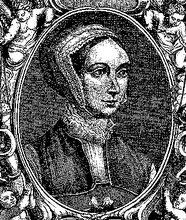Recently I visited Winchester for the first time and was so pleased finally to see the place where Philip II of Spain married Mary Tudor. I had imagined a walled town built on a shoulder of higher ground, whereas Winchester is built in a valley.
Of course, as you might imagine, I wanted to visit the site of the Winchester martyrdoms. Winchester has five martyrs, all of them Blesseds and, after visiting the lovely Catholic Church of St Peter's on Jewry Street, with its fine windows commemorating the martyrs I headed first to the site of the old gaol.
The old gaol no longer stands; a Weatherspoons, 'The Old Gaol House' now occupies the place. However, I found my way round to the back of the pub - photo above - where the old Tudor gaol used to stand, and here I was able to spend some time in prayer to those who had been held here before their execution.
Blessed John Slade, a school master, was hung drawn and quartered on the Market Square by the old Guildhall on 30th October 1583. This photo shows the site today:
Here he made the sign of the cross on the posts of the scaffold and, although there is no memorial to him at this place today, his memory is not forgotten.
Blessed Roger Dickenson, priest, and Blessed Ralph Milner, layman, were executed together at the Bar Ditch on 7th July 1591.
The Bar Ditch was just north of the old city Walls and gatehouse, where Jewry Street passes over North Walls to Hyde Street. The ditch was part of the old earthwork defences just outside the walls. The site is now built upon and, although there is a plaque detailing the site of the old city gate which stood here, there is no memorial to these two great men. Nonetheless, I stayed here for a while and asked for their intercession for the new evangelisation of England and Wales.
I have not been able to discover the place of execution of the other two martyrs of Winchester. Blessed Lawrence Humphrey, layman, was executed on an unknown date in 1591, at the age of twenty. The hangman boxed his ears for making the sign of the cross as he mounted the ladder. Blessed James Bird, layman, was hung, drawn and quartered at the age of nineteen for having become a Catholic.
It is hard to pay tribute to such noble men; their constancy makes me want to stop and kneel.
If you know the place where the last two martyrs were executed I would be glad to hear from you.

















